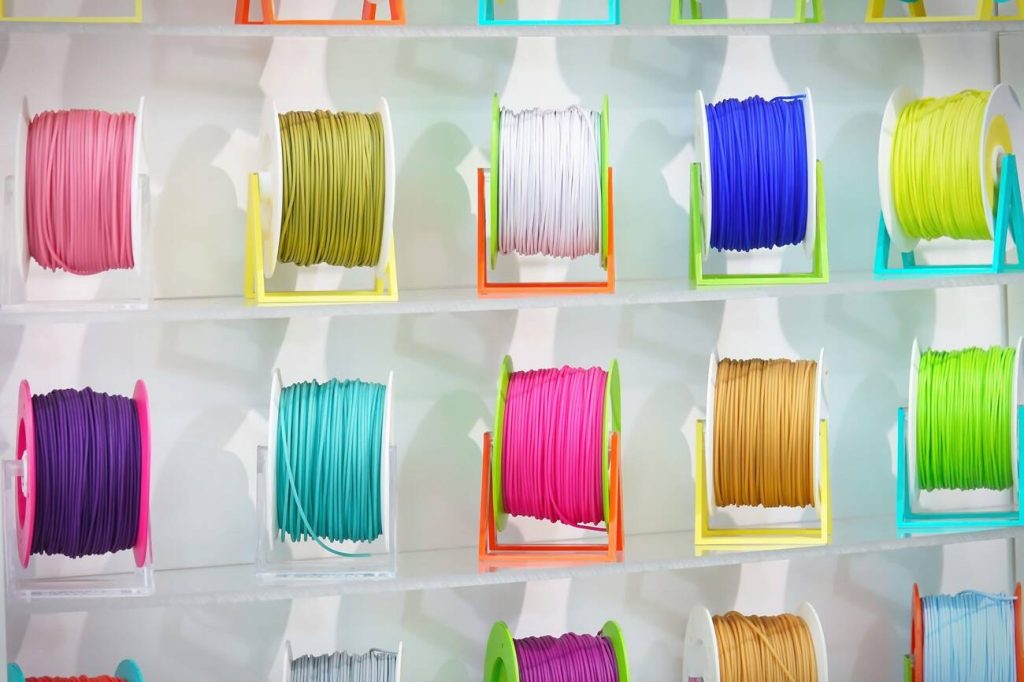Are you ready to dive into the diverse world of 3D printing filament? From flexible and durable to temperature-resistant and customizable, there’s a filament out there for every project. In this article, we’ll guide you through understanding different types of 3D printing filament. We’ll compare their properties, discuss specific uses, and explore the benefits and applications of 3D printing. So grab your imagination and let’s embark on a filament-filled adventure together!
Types of 3D Printing Filaments
You should familiarize yourself with the different types of 3D printing filaments available. Understanding the various types of 3D printing filaments is essential for choosing the right material for your projects. There are several types of 3D printing filaments, each with its own unique properties and uses. Some common types include PLA, ABS, PETG, TPE, and Nylon. PLA is easy to print and biodegradable, making it great for decorative items and prototypes. ABS is durable and resistant to high temperatures, making it ideal for automotive parts and toys. PETG is known for its flexibility and durability, making it suitable for functional objects. TPE is rubber-like and stretchable, perfect for high-wear objects that require flexibility. Nylon offers high impact resistance and is often used in functional prototypes. By understanding these different types of 3D printing filaments, you can choose the one that best suits your needs.
Comparison of 3D Printing Filaments
PLA filament is easy to print and has minimal shrinkage/warping, making it a suitable choice for decorative items and low difficulty projects. When searching for 3D printing filaments, you may come across terms like “d printing filament near me” or “d printing filaments.” These phrases indicate that you are looking for local suppliers or a variety of filaments to choose from. The 3D printing industry has grown significantly in recent years, with many options available in terms of filaments and printers. Whether you’re a beginner or an experienced user, finding the right filament for your project is crucial. From PLA to ABS and PETG, each filament type has its own unique characteristics and uses. So whether you’re working on a small project at home or part of a larger 3D printing farm, understanding the different types of filaments will help you achieve the best results.
Specific Filament Types and Uses
When choosing the best filament for your project, consider the specific properties and uses of each type. Understanding different filament types is crucial in achieving successful 3D prints. For example, ABS filament is commonly used for automotive parts due to its durability and resistance to high temperatures. On the other hand, PETG filament is ideal for functional objects that require flexibility and strength. PLA filament is great for prototypes and decorative items, while TPE filament works well for high-wear objects that need flexibility. Nylon filament is perfect for functional prototypes and mechanical parts. By understanding the specific uses of each filament type, you can make informed decisions on which one will best suit your project’s requirements.
Benefits and Applications of 3D Printing
To fully grasp the advantages and potential applications of 3D printing, it’s important to explore its benefits in terms of faster prototyping, reduced waste, complex geometries, customization, and unique designs.
- Faster Prototyping: With 3D printing, you can rapidly create prototypes and iterate designs much quicker compared to traditional manufacturing methods.
- Reduced Waste: 3D printing allows for precise material usage, minimizing waste and reducing environmental impact.
- Complex Geometries: One of the biggest advantages of 3D printing is its ability to create intricate and complex shapes that would be challenging or impossible with traditional manufacturing techniques.
Applications:
- Automotive Industry: 3D printing is used for rapid prototyping of car parts and customized components.
- Medical Field: It enables the production of personalized medical devices such as prosthetics or implants.
- Aerospace Industry: Utilized for lightweight parts production and complex structures like engine components.
Understanding different types of 3D printing filament is crucial in harnessing these benefits effectively.
Factors to Consider in Filament Selection
One important factor to consider in selecting filament is the compatibility of the filament with your 3D printer. Different printers have different requirements and capabilities, so it’s essential to choose a filament that is compatible with your specific machine. Additionally, you should also consider the desired properties of the printed object, such as strength, flexibility, or heat resistance. The cost and availability of the filament are also important factors to consider. You should evaluate the print quality and resolution required for your project as well. Finally, considering the environmental impact and sustainability of the filament can also be a crucial factor in making your selection.
| Factors to Consider |
|———————|——————|
| Filament Compatibility | Ensure it works with your 3D printer |
| Desired Properties | Strength, flexibility, heat resistance |
| Cost and Availability | Consider budget and accessibility |
| Print Quality and Resolution Required | Evaluate level of detail needed |
| Environmental Impact and Sustainability | Choose an eco-friendly option |
Smoothest Prints
When it comes to achieving the smoothest prints with your 3D printer, choosing the right filament is key. Smooth prints not only look more professional but also have better surface quality and detail. Here are some tips for getting the smoothest prints:
- PETG filament: PETG is known for producing very smooth prints when the printer is properly calibrated. It offers excellent layer adhesion and minimal shrinkage/warping, resulting in smoother surfaces.
- ABS filament: While ABS can be prone to warping, it can still create smooth parts when smoothed with acetone. Proper calibration of your printer is crucial for achieving smooth prints with ABS.
- Smoothness techniques: In addition to choosing the right filament, you can enhance the smoothness of your prints by experimenting with different printing settings such as temperature, print speed, and infill density.
Strongest Filament
If you want the strongest filament for your 3D printing projects, polycarbonate is your best choice. Polycarbonate filament is known for its high tensile strength and is widely used in applications that require durability and toughness. It is a popular choice in industries such as automotive and electrical, where parts need to withstand high wear and stress. Additionally, polycarbonate has excellent heat resistance and can maintain its strength even at elevated temperatures. This makes it suitable for use in environments where temperature fluctuations are common. Whether you’re a beginner or an experienced user, polycarbonate filament provides the strength and reliability you need for your 3D printing endeavors.
| Filament Type | Strength |
|---|---|
| PLA | Low |
| ABS | Medium |
| PETG | Medium |
| TPE | Low |
| Nylon | Medium |
| Polycarbonate | High |
Table: Comparison of Filament Strength Levels
Best Filament Choice
The best filament choice for general-purpose use is PETG filament because it is affordable, easy to print, and offers good mechanical properties.
Why PETG filament is the best choice:
- Affordability: PETG filament is cost-effective and readily available, making it a budget-friendly option for beginners and experienced users alike.
- Ease of Printing: PETG filament has excellent layer adhesion and minimal shrinkage/warping, resulting in smoother prints with fewer printing issues.
- Good Mechanical Properties: PETG filament offers durability and flexibility, making it suitable for functional objects that need to withstand stress.
Understanding different types of 3D printing filaments can help you choose the right one for your specific needs. Whether you are a beginner looking for easy-to-use filaments or exploring 3D printing ideas for beginners, PETG filament provides a reliable choice. Moreover, PETG’s durability makes it applicable in various fields such as 3D printing in the medical field where functional objects are required.
Filament for Beginners
If you’re new to 3D printing, PLA filament is recommended as a great choice to get started due to its affordability and ease of use. PLA filament is perfect for beginners, whether you’re a kid or an adult trying out 3D printing for the first time. It’s safe and non-toxic, making it suitable for educational purposes and even FDA-approved for certain food-related applications. With PLA filament, you can bring your creative ideas to life by designing and printing various objects like toys, decorative items, architectural models, and more. Plus, if you’re looking to make some extra money, there are plenty of opportunities to sell your unique 3D printed creations online or at craft fairs. So dive into the world of 3D printing with PLA filament and let your imagination run wild!
Differences Between ABS and PLA Filaments
Compare ABS and PLA filaments to determine the best option for your 3D printing needs.
- ABS Filament:
- Durable and resistant to high temperatures
- Ideal for items requiring strength, like toys or automotive parts
- Medium difficulty, with a print temperature range of 210°C – 250°C
- PLA Filament:
- Easy to print and biodegradable
- Suitable for decorative items and prototypes
- Low difficulty, with a print temperature range of 180°C – 230°C
The main differences between ABS and PLA filaments lie in their properties. ABS is known for its durability and heat resistance, making it suitable for functional objects that require strength. On the other hand, PLA is easy to print and biodegradable, making it a great choice for beginners or when creating decorative items. Consider the specific requirements of your project before selecting the filament type that suits your needs best.



